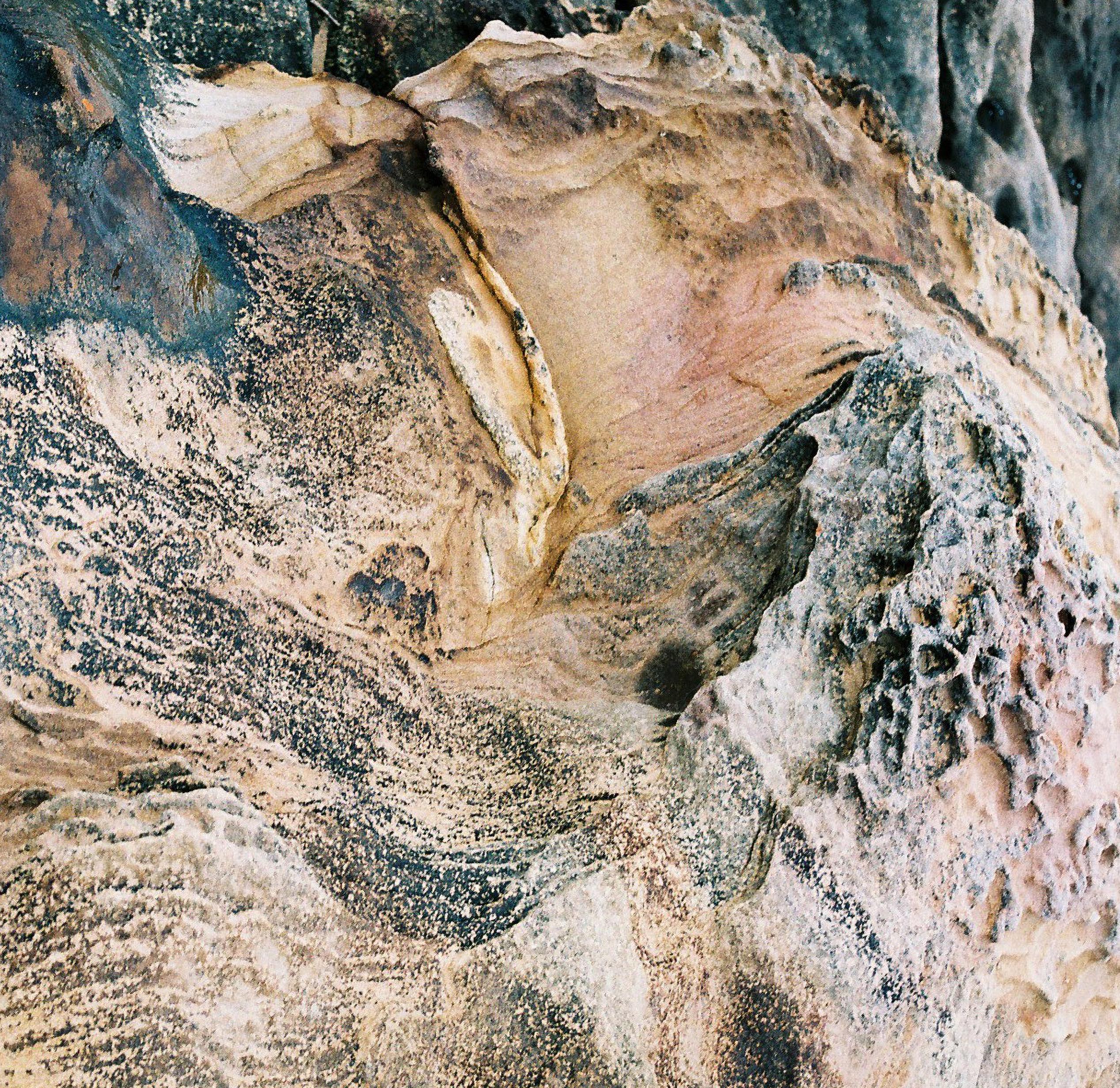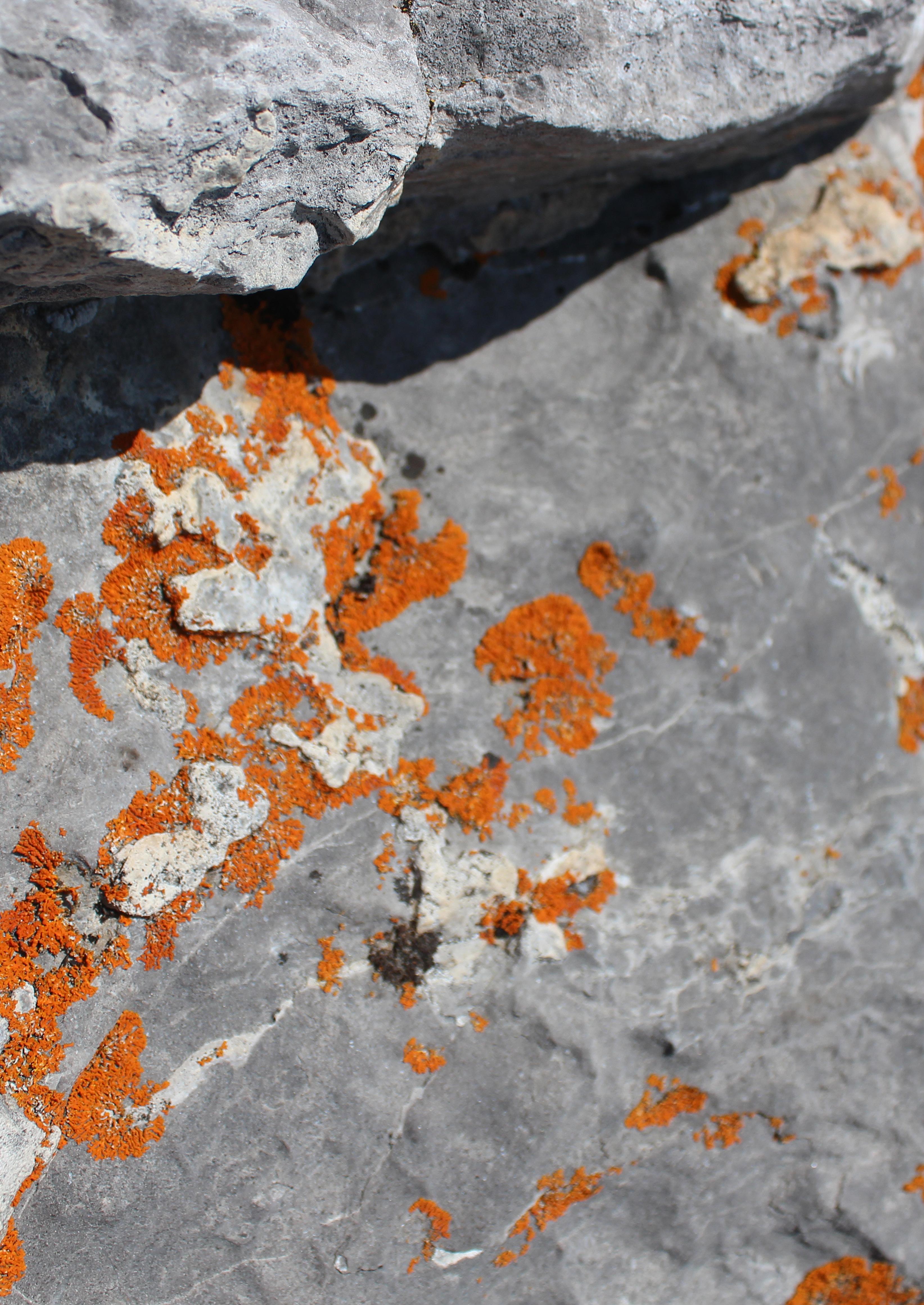
7 minute read
Staying With The Trouble: Making Kin In The Chthulucene
From The Earth Issue Bookshelf
A book review by Hannah Rowan Photography by Hannah Rowan & Elena Cremona
What does it mean to interact with nature when more and more living beings all over the planet increasingly experience a loss of habitat, spiralling ecological devastation, oceanic acidification and species extinction? Despite daily news of climate change and dizzying scientific figures and warnings, the crisis can still often get misplaced into a time of beyond, of things to come, the crisis of present is deeply intoxicated with trouble. Within this unfolding loss, what methods are needed to critique the systems that threaten and destroy these habitats? In awareness of the escalation of ecological ruin, can joy still be found in encountering intricate relationships between living beings, and how might we learn from their survival?
Amidst the sixth great extinction of the Earth, multispecies feminist theorist Donna J. Haraway offers provocative new ways to reconfigure our relationship to the Earth and all its inhabitants. Staying with the Trouble: Making Kin in the Chthulucene weaves through times, matter and meaning to extend beyond the pages, knotting together living beings, places and temporalities. Haraway’s method of thinking through this is bodily and entangled, she utilises the language of making, threading, connecting, which becomes suggestive of repair, growth and building. Haraway describes the form and language of the text as interconnected in its essence: ‘braiding me and my readers into beings and patterns at stake.’ Haraway complicates definitions of self, time, present, future, fact, fiction and invites us to stay with the trouble, encouraging her readers to work through as opposed to within the structures we critique, notably the destructive legacy of settler colonialism and extractive capitalism. Amidst the awareness of ecological collapse, the very first page of Staying with the Trouble: Making Kin in the Chthulucene is a call to arms.

Trouble is an interesting word. It derives from a thirteenth-century French verb meaning “to stir up,” “to make cloudy,” “to disturb.” We-all of us on Terra-live in disturbing times, mixed-up times, troubling and turbid times….Our task is to make trouble, to stir up a potent response to devastating events, as well as to settle troubled waters and rebuild quiet places…. staying with the trouble requires learning to be truly present, not as a vanishing pivot between awful or endemic pasts and apocalyptic or salvific futures, but as mortal critters entwined in myriad unfinished configurations of places, times, matters, meanings.
Haraway’s tools for this methodology involve thinking, working, making and taking action through the trouble. Striking the balance between awareness of this devastation combined with resilience and wonder is what makes Haraway’s approach to writing about the present and future living beings of this Earth so vital. Symbiosis and Kin are two of the main threads that weave through Haraway’s storytelling as a means to enable growth and repair. A general definition of symbiosis is an interaction between two different organisms living in close physical association, typically to the advantage and survival of both. A familiar example of this can be seen between reef-building corals and photosynthetic algae, the organisms share a home and mutually aid each other in photosynthesis needed for survival and growth. Kin can be understood as a term given to one’s family or relations, but Haraway extends this notion to all living beings to include human, insect and plant life, to which she gives us all the name of ‘critters’. The book makes clear the importance of storytelling for earthly survival as a means to develop ways of making kin and becoming with, the message being that ‘we are all critters’. There is a tragic irony that due to warming oceans and acidification, these existing examples of kinship and symbiotic growth are becoming extinct.
Staying With the Trouble: Making Kin in the Chthulucene is full of references and examples of symbiotic life and kinship in efforts for life to continue, what Haraway describes as ‘ongoingness’, these influences bring together biology, art, indigenous land rights, science fiction and feminism. She conjures a myriad of earthly and fabulated future beings to convey how “science fact and speculative fabulation need each other, and both need speculative feminism.” In reference to Ursula Le Guin and Latour, she passionately argues that we ‘need to change the story...to think outside the prick tale of Humans History.’ Haraway stresses the intersectionality of feminism, ecological awareness, environmental justice and social justice, the examples she cities often physically involve the act of making and mending to demonstrate resilience, kinship and hope, as seen in the crochet coral reef project and the art of Navajo weaving, to knot together living beings, communities and stories of survival. These are inspiring examples of efforts to braid repair into damaged places through tactile gestures and acts across species. Haraway’s intricate and multifaceted approach to storytelling of symbiotic relationships opens the reader’s gaze to see these relationships everywhere, in many times, scales and localities. By looking closely and moving through scales of life forms we can be reminded of the detailed wonder that can be found by simply looking at the minutiae of life, ancient and new, upon a forest floor, where animate and interconnecting life forms of non-human ecologies play out across organic and lithic timescales. Growing on rocks and clinging to trees are sprays of lichen, where a mutualistic relationship between algae and fungi is unfolding.

One of the most enduring notions throughout the book is drawn from Haraway’s colleague and friend Anna Tsing who examines ‘the arts of living on a damaged planet’ in The Mushroom at the End of the World: Life in Capitalist Ruins. Tsing studies the matsutake mushroom, which often grows in sites of human-disturbed landscapes from excessive logging. The matsutake has an ability to nurture trees and help forest regrowth. Examples like these encourage us, in turn, to look for signs of life amidst human-disturbed places. Observing the symbiotic relationships between living organisms provides a way of thinking through contradictions of destruction alongside a need for ‘ongoingness’, to speculate what life might look like in the ruins made my human systems.
Staying the with Trouble: Making Kin in the Chthulucene asks how should we mourn a planet and prevent multi-species extinction whilst not totally succumbing to the awful apocalyptic doom of these troubling times. Haraway suggests language as a route away from environmental catastrophe, in her own words ‘it matters what ideas we use to think other ideas’, as the language we use to describe events and beings filters down into our consciousness and behaviour. Haraway cautions embracing the term Anthropocene, for these time-spaced global events of the geological epoch we inhabit. This falls into the trap of oversimplifying the narrative of climate change and affirms an anthropocentric perspective by placing humankind at the centre of these events, in an attitude that reinforces the rhetoric that has unwoven humans from interconnected life forms. This viewpoint also places humans as equally culpable as opposed to critiquing specific human systems such as colonialism and capitalism and neglects to recognise the unequal distribution of toxicity and destruction, which often affects indigenous and marginalised communities with the heaviest and earliest burdens.

Haraway offers her own linguistic suggestion of Chthulucene, the etymology derives from ‘Pimoa Cthulhu’, a Californian redwood spider. This tentacular language is suggestive of web building and manifests ideas of connection that interweaves critters. Telling the story of the Chthulucene is Haraway’s speculative offering of how we might ‘live in the ruins.’ She delves into tales of the Chthulucene as a needed ‘third story, a third net bag for collecting up what is crucial for ongoing, for staying with the trouble.’ Haraway cites examples of the Chthulucene currently in action before braiding her own speculative narration in the final chapter where she begins her own storytelling for earthly survival where she speculates into a future over 400 years from now. The future is not without its troubles, but in the year 2425, many humans have learnt how to live alongside other beings, entwined in symbiotic kinships of growth and solidarity. As a coping strategy Haraway employs speculative storytelling to enable us to think about what it means to stay present - here, now and for the futures to come. The challenge this leaves us is to turn the language and ideas of Staying with the Trouble into non-hierarchical, symbiotic kinships across species and timescales. Haraway’s creative thinking is full of imagination and speculation; it is deeply necessary and vital as a way for thinking through what it means to share this Earth with others. She collapses human hierarchy in relation to other beings to frame our existence within a wider mesh of timescales, that threads us together with a myriad of critters, to enforce the vitality of making kin and life in the ruins.
We are part of a system driven by power, money and exploitation, where personal gain is often prioritised over the wellbeing of our planet. We are part of a growing movement that challenges this status quo, and we hope that you’ll join the discussion.
Thank you.










